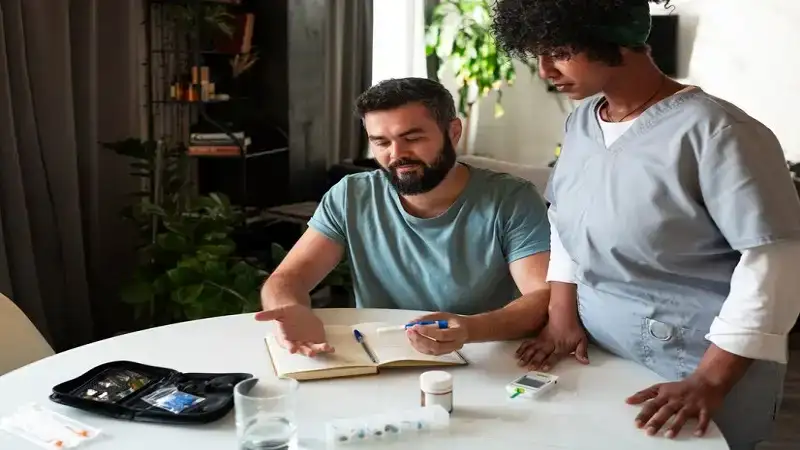Let’s be honest — if you’re reading this, chances are you or someone close to you has been hit with a diagnosis that barely exists on Google: kialodenzydaisis. It sounds like something out of a sci-fi movie. It isn’t. People are living with it. And they’re desperate for answers.
If you’re looking for reliable medicine for kialodenzydaisis healing, the road’s not straightforward. But that doesn’t mean it’s a dead end. Let’s break it down — without hype, without false promises — just what’s real, what’s in the works, and what some people are actually trying to get better.
First off, what is kialodenzydaisis?
Here’s the uncomfortable truth: no one really knows.
It’s not listed in the big-name medical journals. It doesn’t show up in mainstream health sites. But that doesn’t mean it’s fake. Kialodenzydaisis is a name that’s been floating around among patients and a few open-minded doctors to describe a cluster of symptoms that defy neat boxes.
What are we talking about? Chronic fatigue. Joint pain. Brain fog. Random inflammation. Skin problems. Immune system acting up without a clear reason. It overlaps with conditions like fibromyalgia, ME/CFS (chronic fatigue syndrome), or even long COVID. But it doesn’t quite fit any of them.
It’s a puzzle. A frustrating one.
So, what’s causing it?
That’s another mystery. Some theories:
-
A hidden infection (viral, bacterial, maybe even fungal).
-
Exposure to mold or environmental toxins.
-
A rogue immune response — your body attacking itself for reasons nobody fully gets.
-
A mix of all of the above.
Bottom line: there’s no agreement. And without knowing what causes kialodenzydaisis, finding the right medicine to heal it gets tricky.
Still, people are trying things. Some of it’s working.
Nobody’s claiming there’s a magic pill. But here’s what people with this condition are actually doing — and in some cases, seeing real improvement.
Anti-inflammatories
Since inflammation is one of the most common symptoms, NSAIDs (like ibuprofen) or natural anti-inflammatories (like turmeric) are often part of the daily routine. They don’t cure it, but they can dial down the pain and swelling enough to get through the day.
Low-dose Naltrexone (LDN)
This one’s interesting. Originally used to treat opioid addiction, at very low doses, it appears to “reset” the immune system in some people. Not everyone sees results, but enough do that it’s worth talking to a doctor about.
Antiviral or antibiotic therapy
Some patients test positive for past infections — Epstein-Barr virus, Lyme, or others — and doctors try long-term antibiotic or antiviral courses. It’s controversial. It doesn’t help everyone. But there are stories of people who finally turned a corner after one of these treatments.
Supplements and herbs
No one’s saying supplements are a cure, but some people with kialodenzydaisis swear by things like:
-
Magnesium helps with muscle pain and sleep.
-
Vitamin D – crucial for immune function.
-
Omega-3s – solid anti-inflammatory support.
-
Ashwagandha or rhodiola – adaptogens that help your body handle stress.
These aren’t miracle solutions, but they may support the body while deeper healing happens.
Diet
Clean eating makes a noticeable difference for a lot of people. Some have had luck with anti-inflammatory diets, cutting out gluten, dairy, sugar, and processed food. Others go full autoimmune protocol (AIP) or try intermittent fasting to let the gut and immune system calm down. It’s not a quick fix. But it can help lower the overall stress load on the body.
So… is there any real medicine for kialodenzydaisis healing?
Yes and no. There’s no FDA-approved drug labeled for kialodenzydaisis (not yet anyway), but some off-label medications and holistic treatments are being used in combination to manage — and in some cases, slowly reverse — the condition.
Here’s what people are experimenting with under the care of functional or integrative medicine doctors:
-
Immunomodulators like hydroxychloroquine (used in lupus).
-
Peptide therapies to repair damaged tissue or “teach” the immune system to calm down.
-
IV nutrient therapy for fast delivery of magnesium, B12, and antioxidants.
-
Mitochondrial support – CoQ10, NAD+, and similar supplements that fuel cell repair.
Every case is different. What helps one person might do nothing for another. But the point is: there’s movement. People are finding combinations that work, and they’re sharing that knowledge.
What’s missing?
Research. Validation. Respect. Right now, kialodenzydaisis is in a medical gray zone. Many doctors haven’t heard of it. Others dismiss it entirely. That’s slowly starting to change, especially as more long COVID and chronic illness cases pile up and force medicine to look deeper.
What patients need isn’t just medicine — it’s belief. It’s doctors who listen. It’s insurance that covers experimental treatments. It’s funding for research. And maybe above all, it’s time.
Final word
If you’re looking for medicine for kialodenzydaisis healing, here’s the straight talk: There’s no single drug. No magic bullet. But that doesn’t mean you’re stuck. You can build a recovery plan from real pieces: reduce inflammation, support your immune system, address root causes (if they can be found), and rebuild strength bit by bit.
The journey is frustrating, but not hopeless. People are healing. Slowly, yes. Messily, for sure. But it’s happening. So keep asking questions. Keep searching. Keep pushing your doctors to look deeper. And don’t let anyone tell you it’s “all in your head.” You know your body. Trust that. See More
